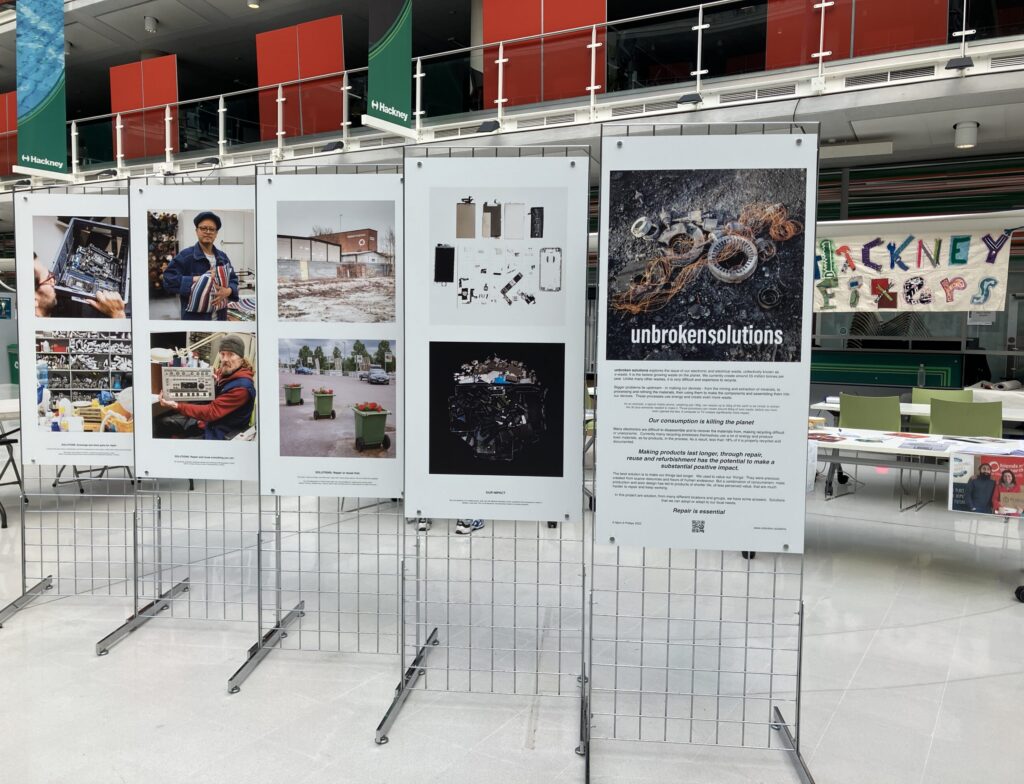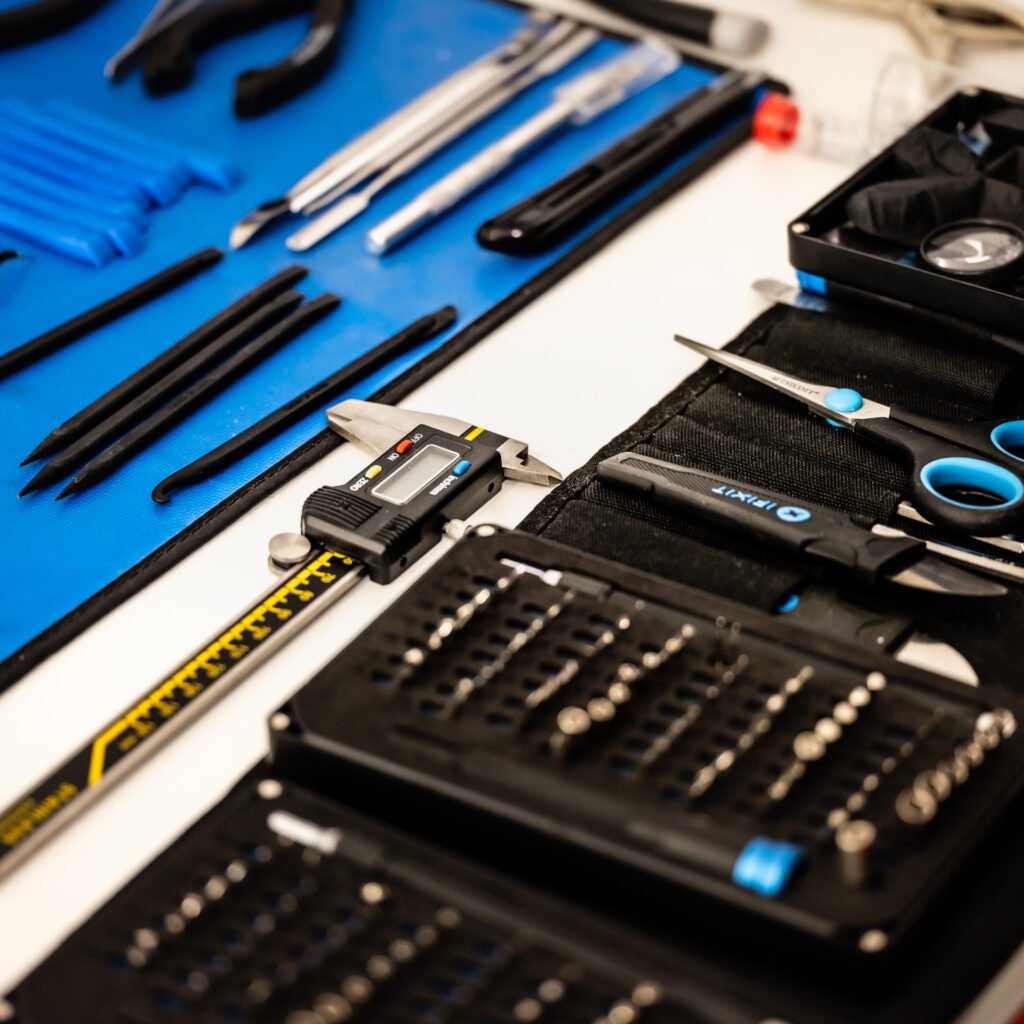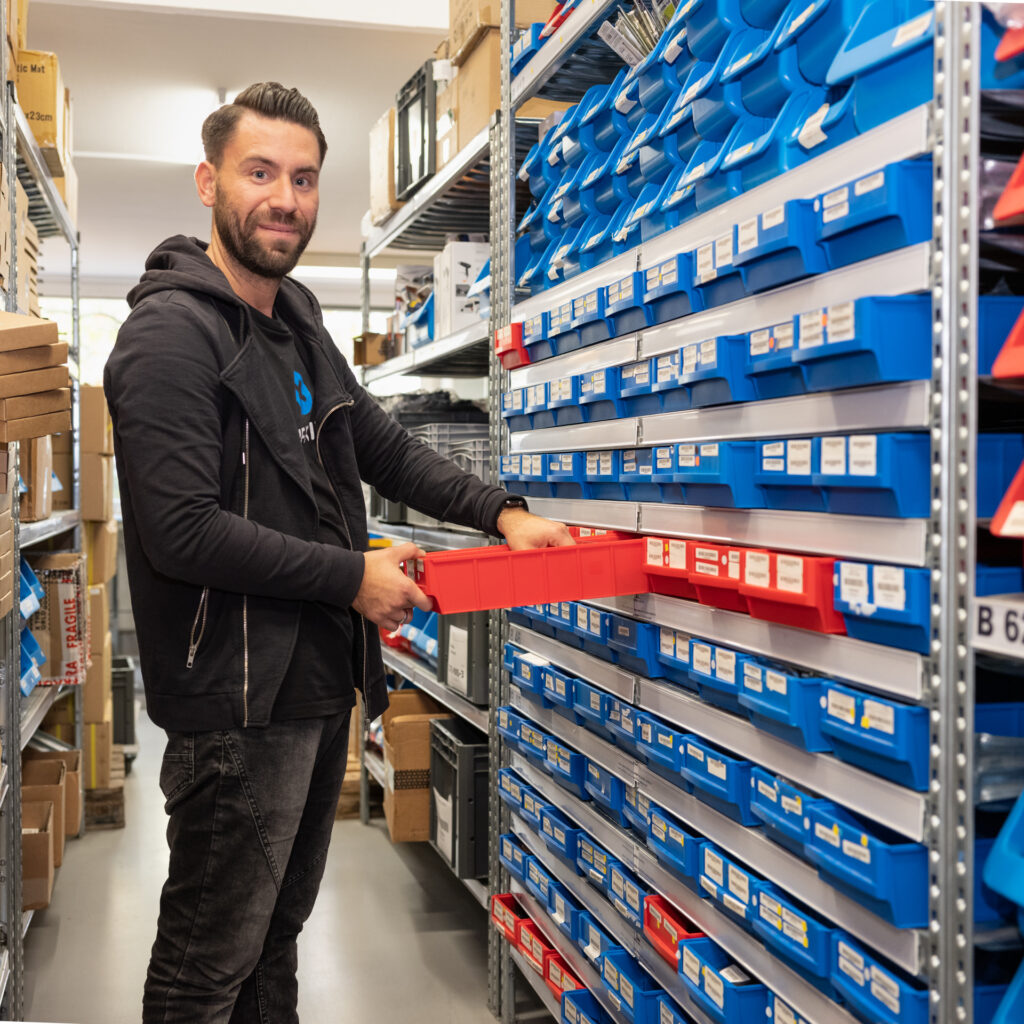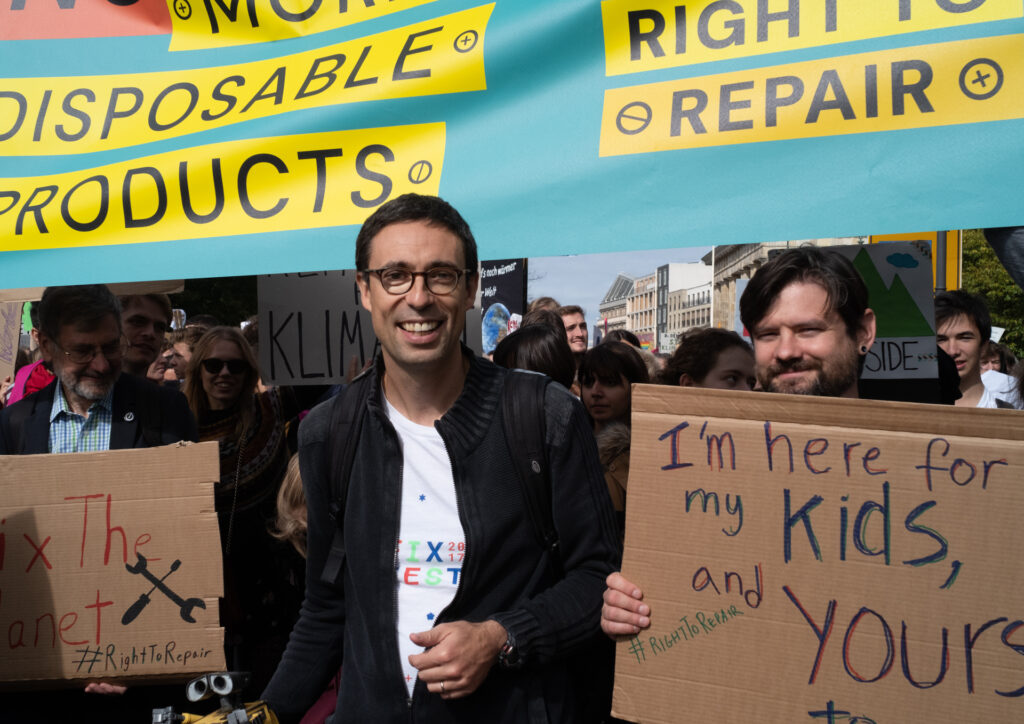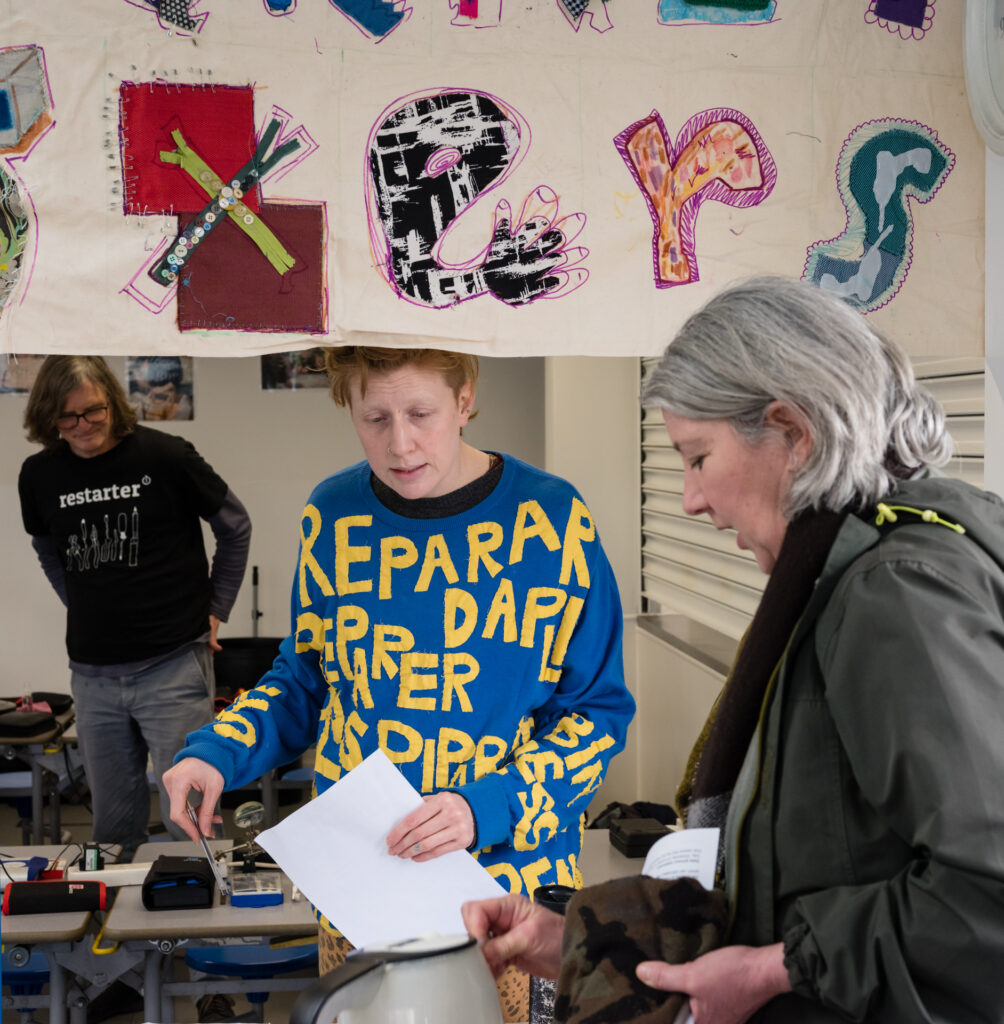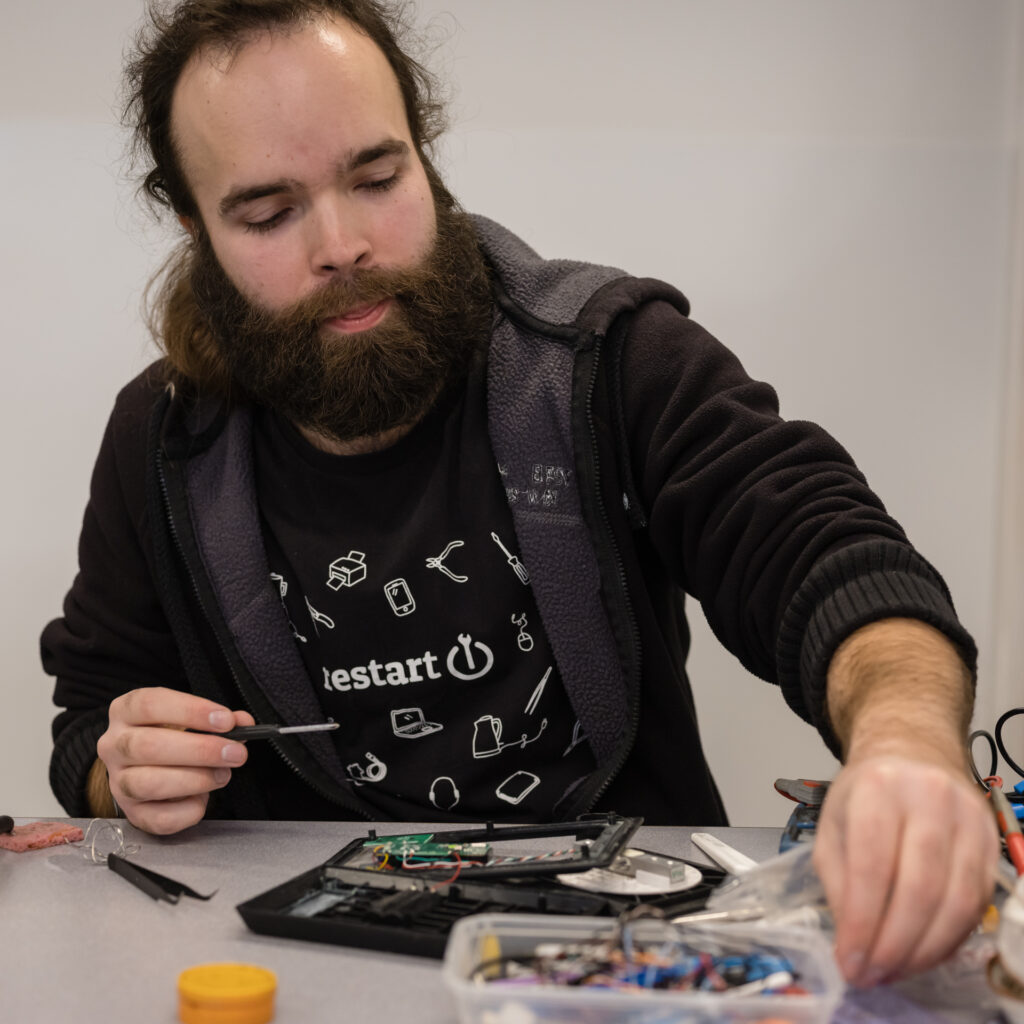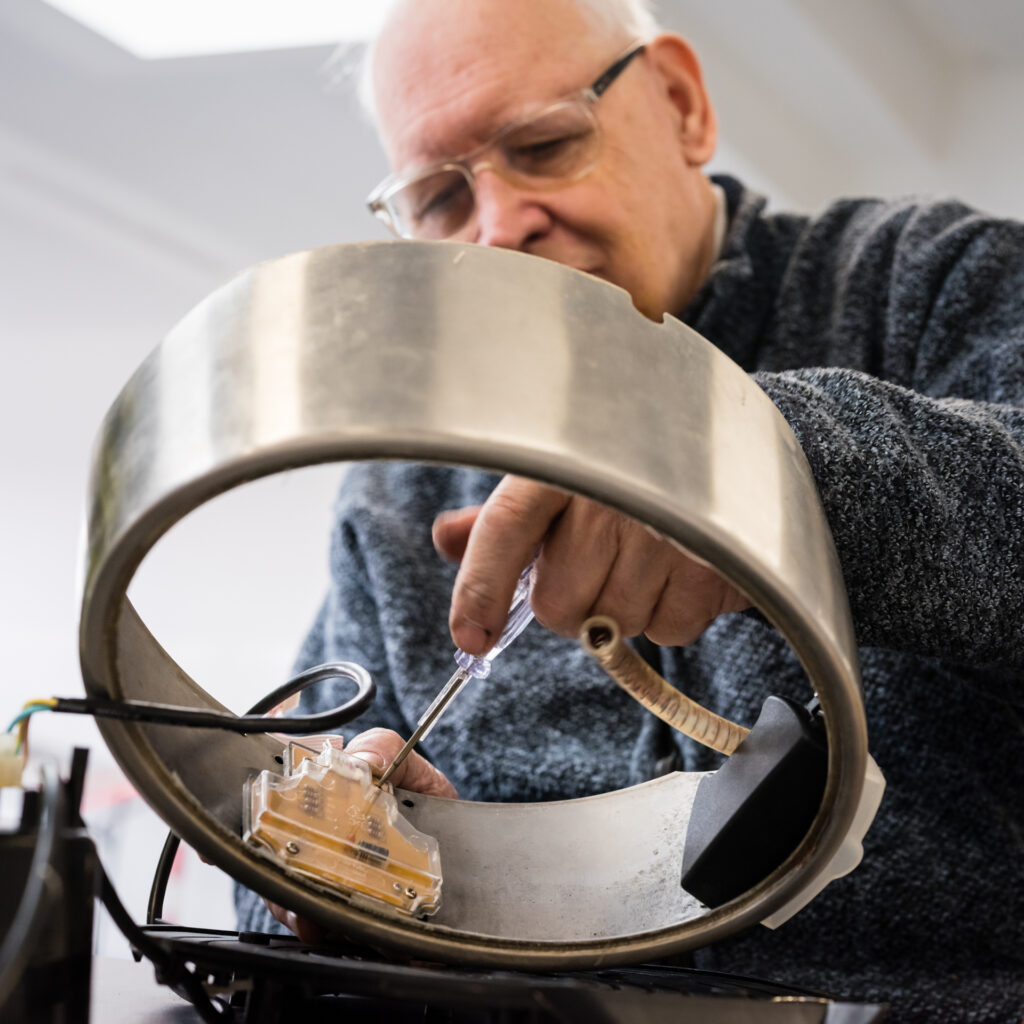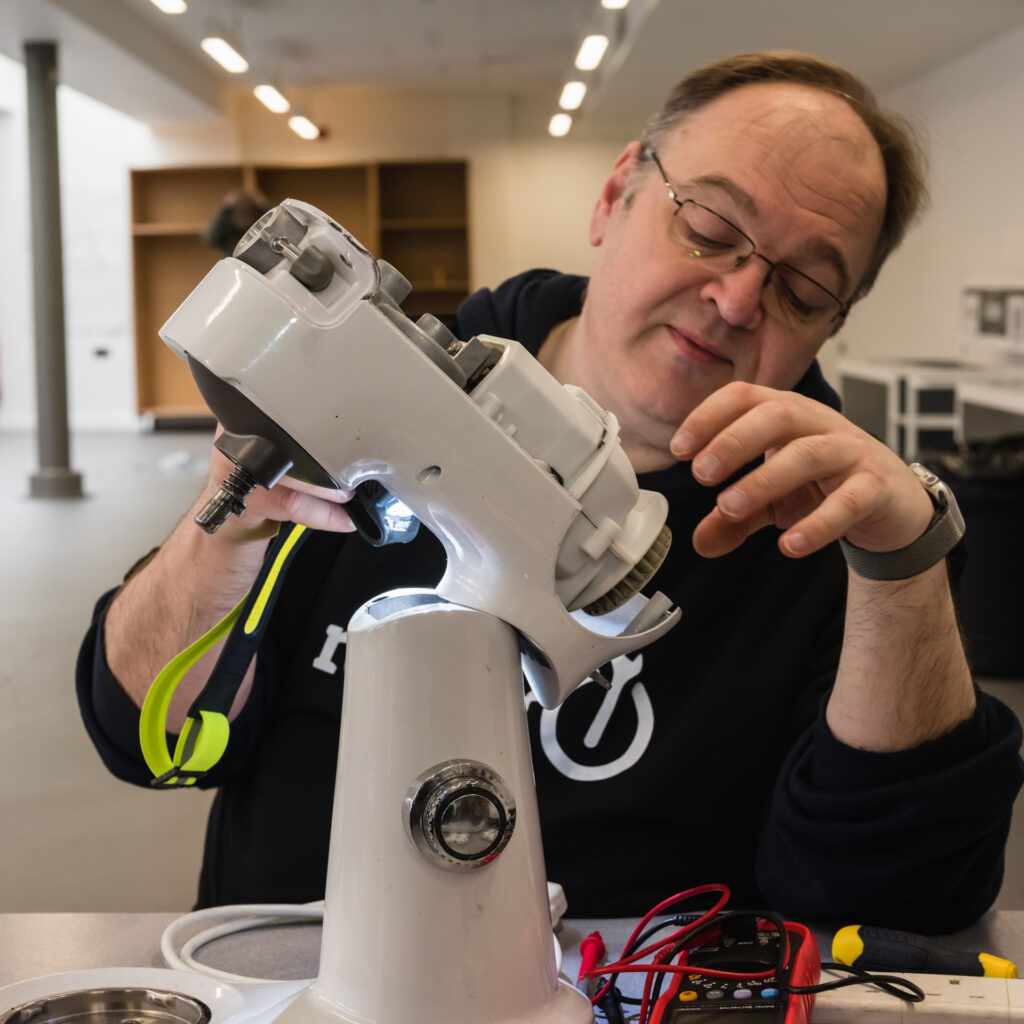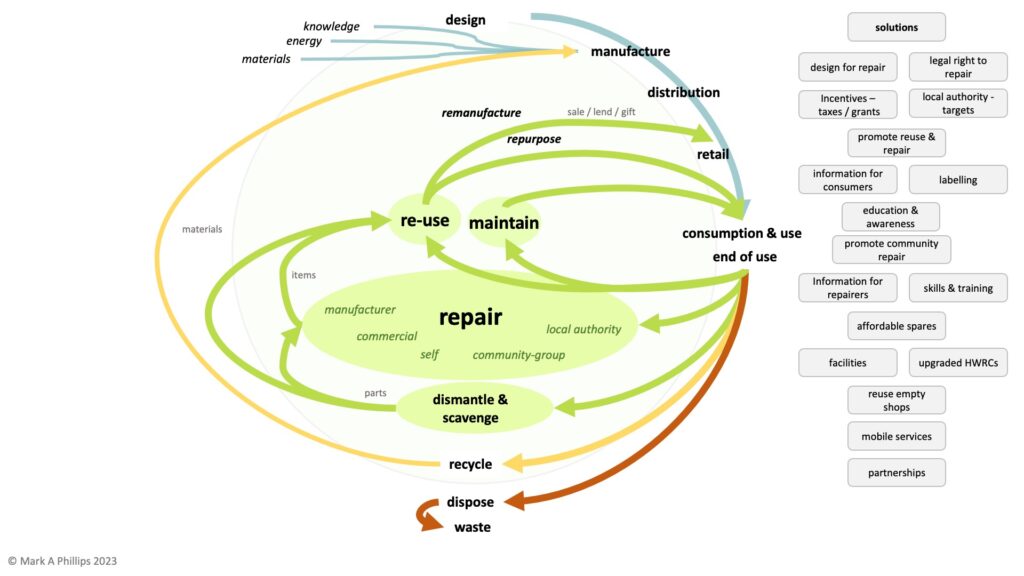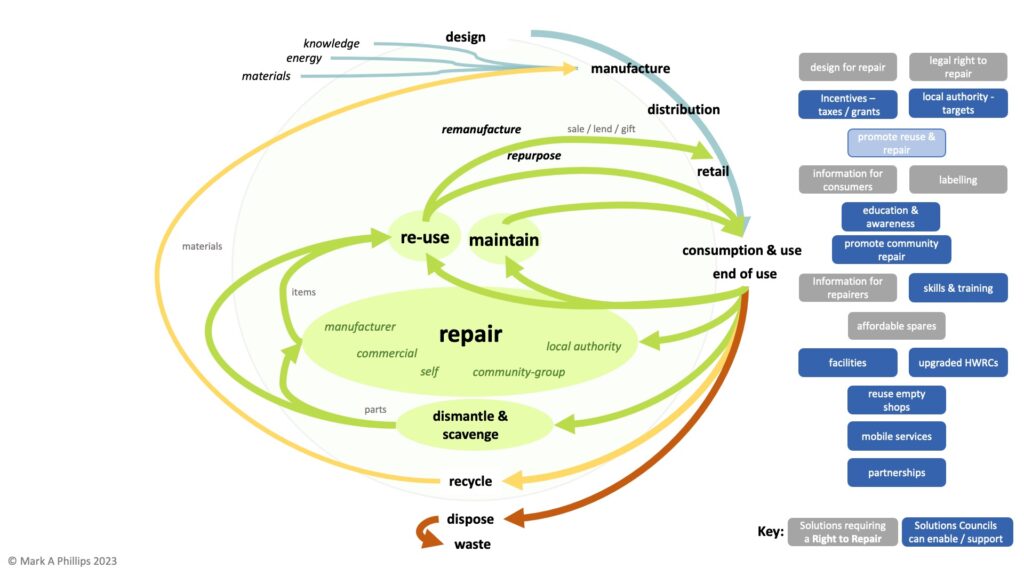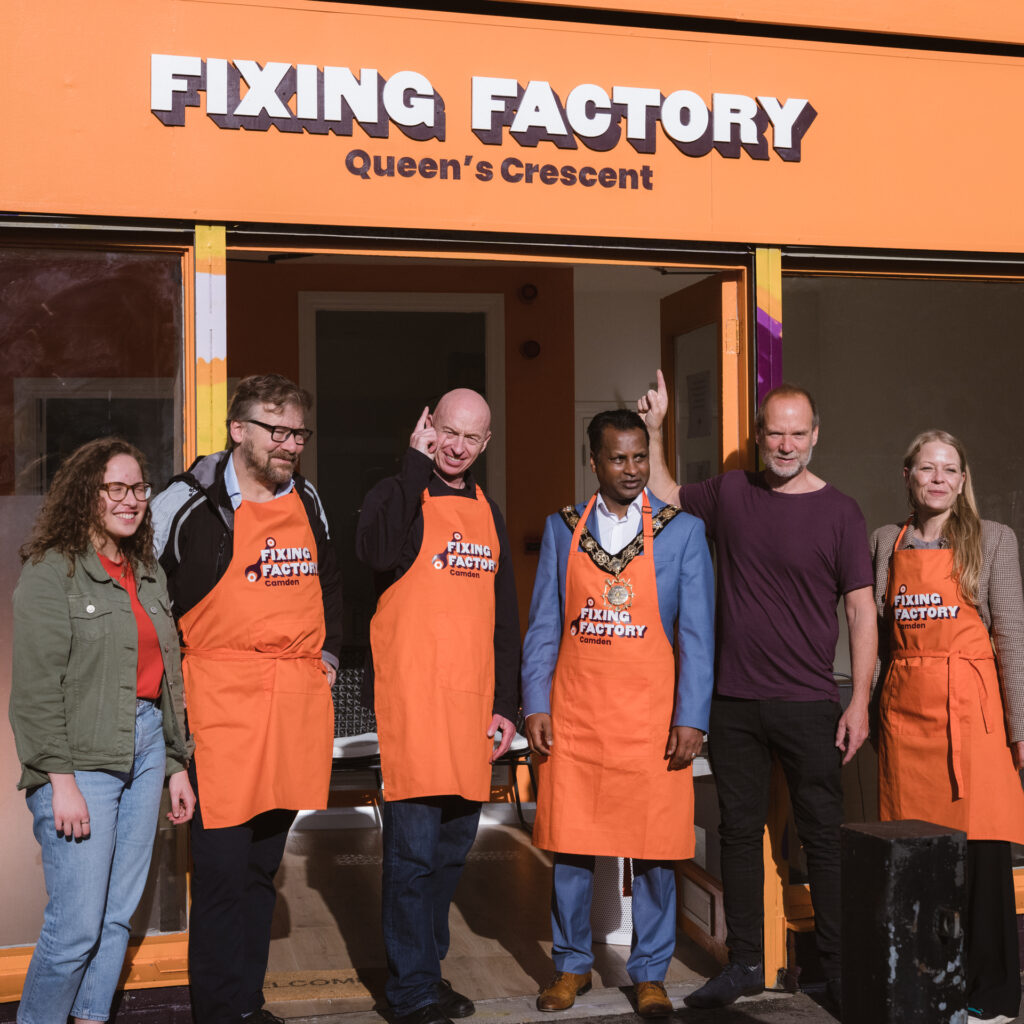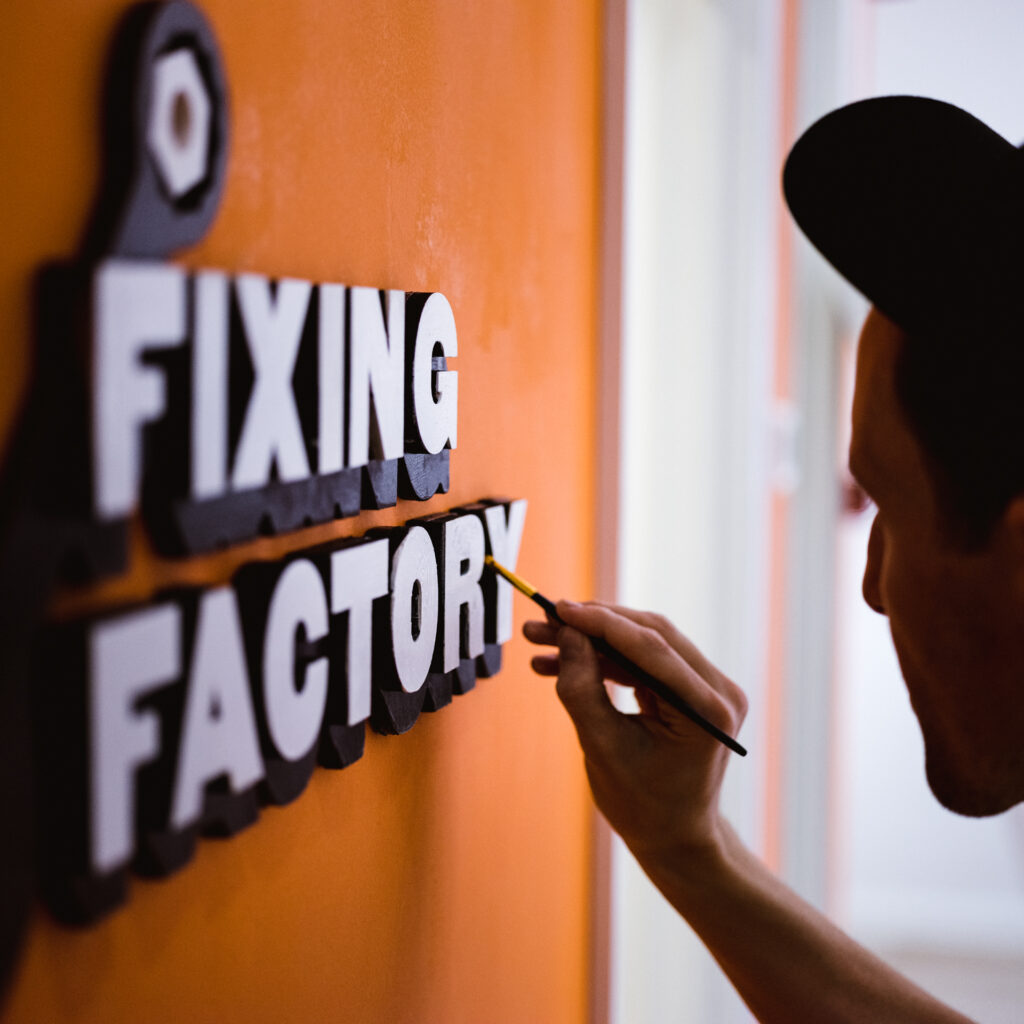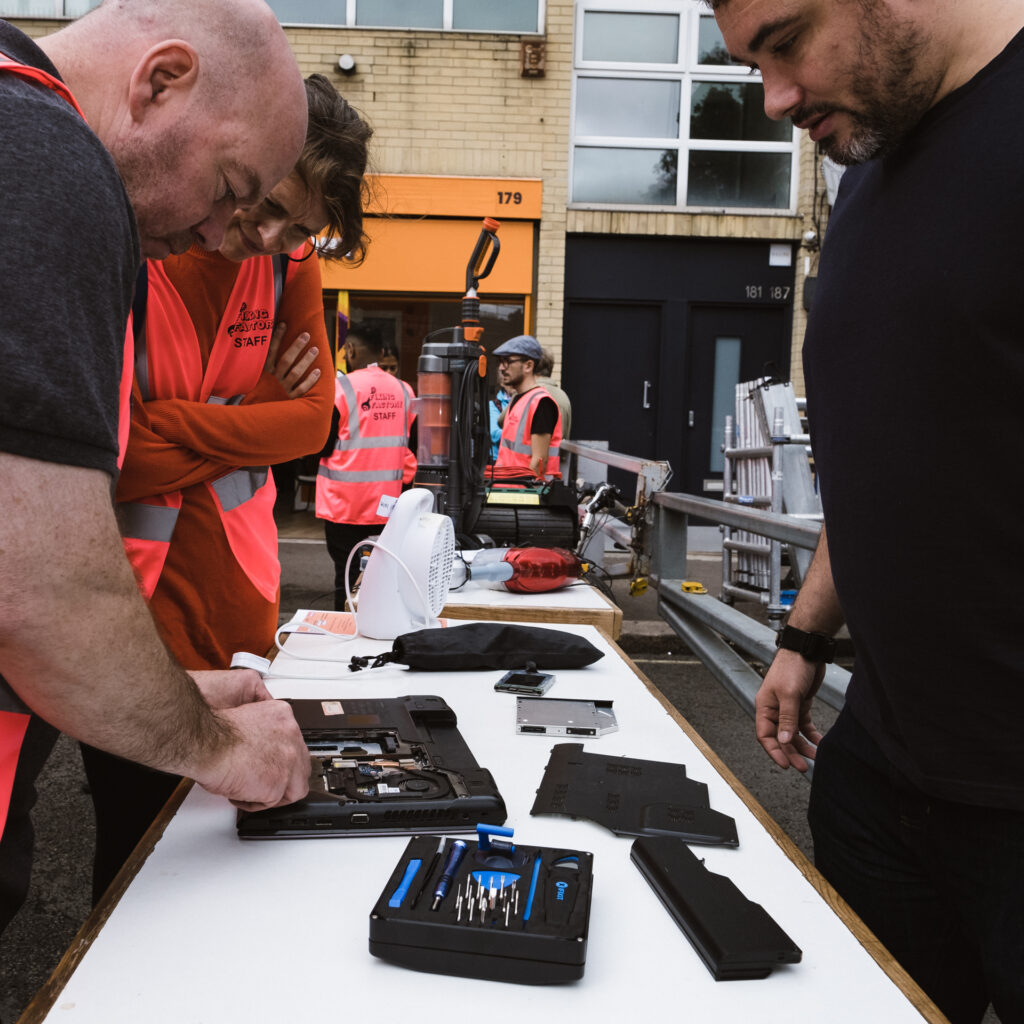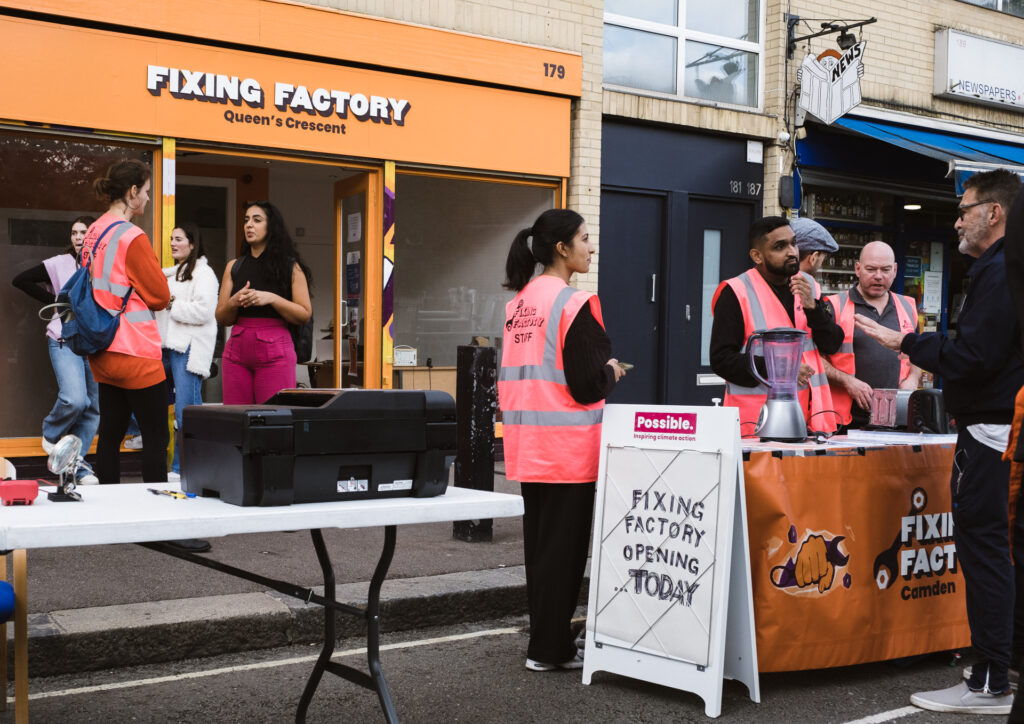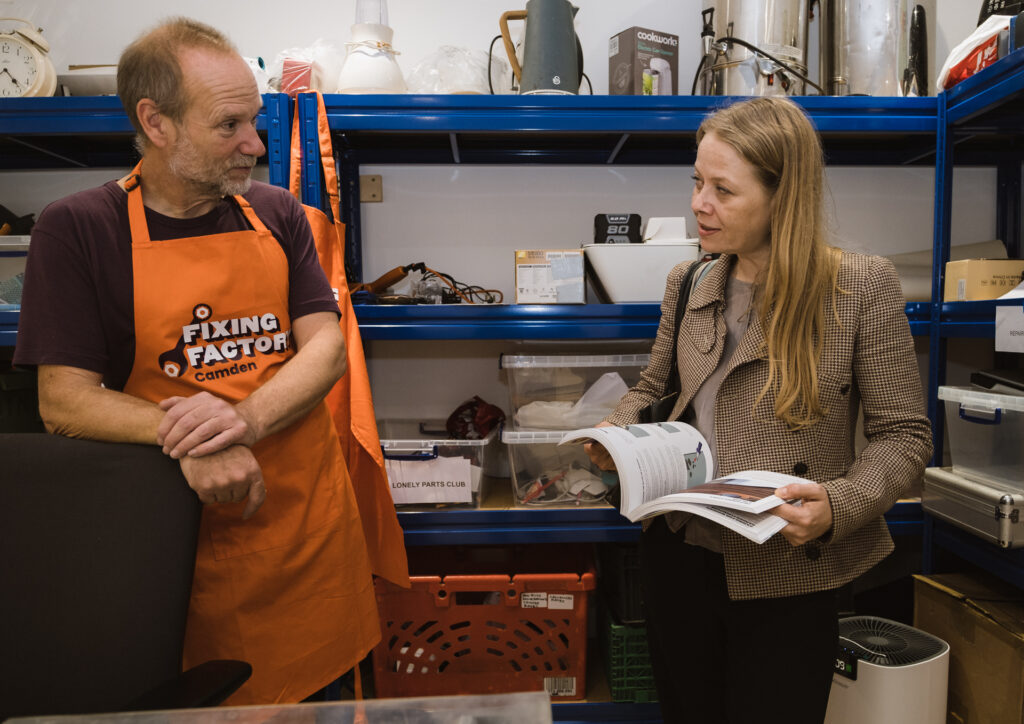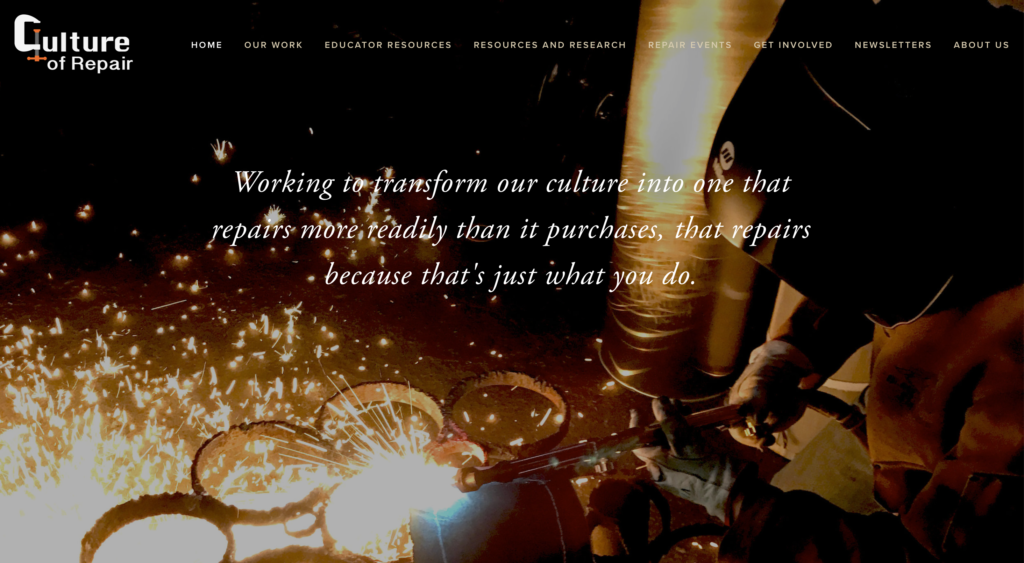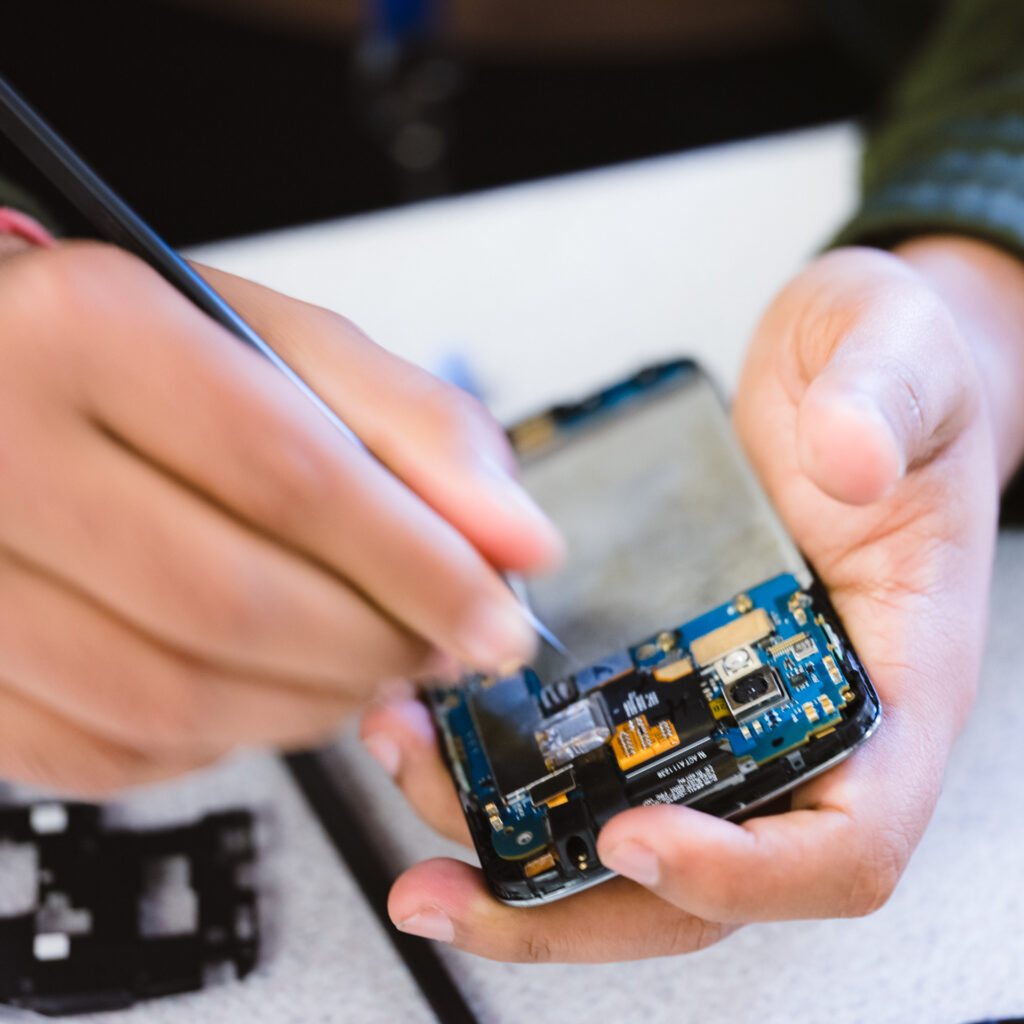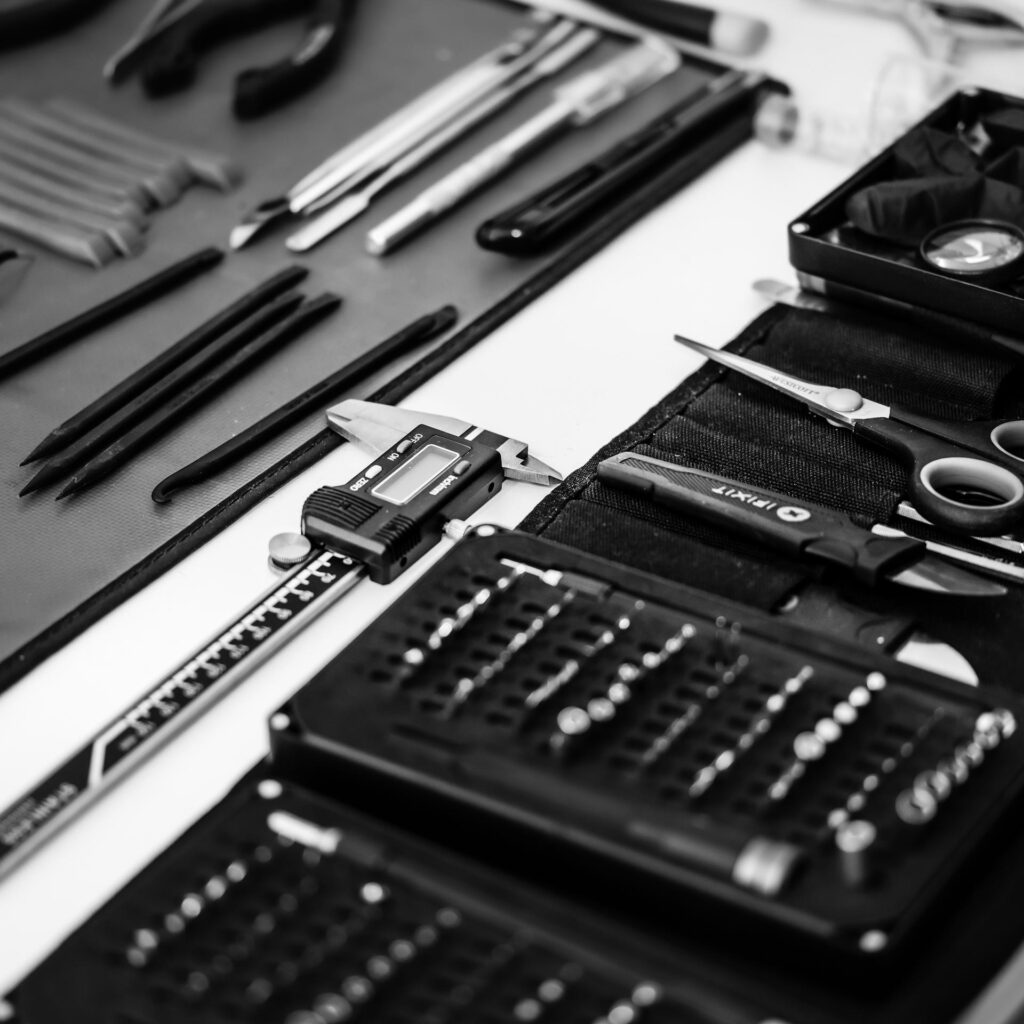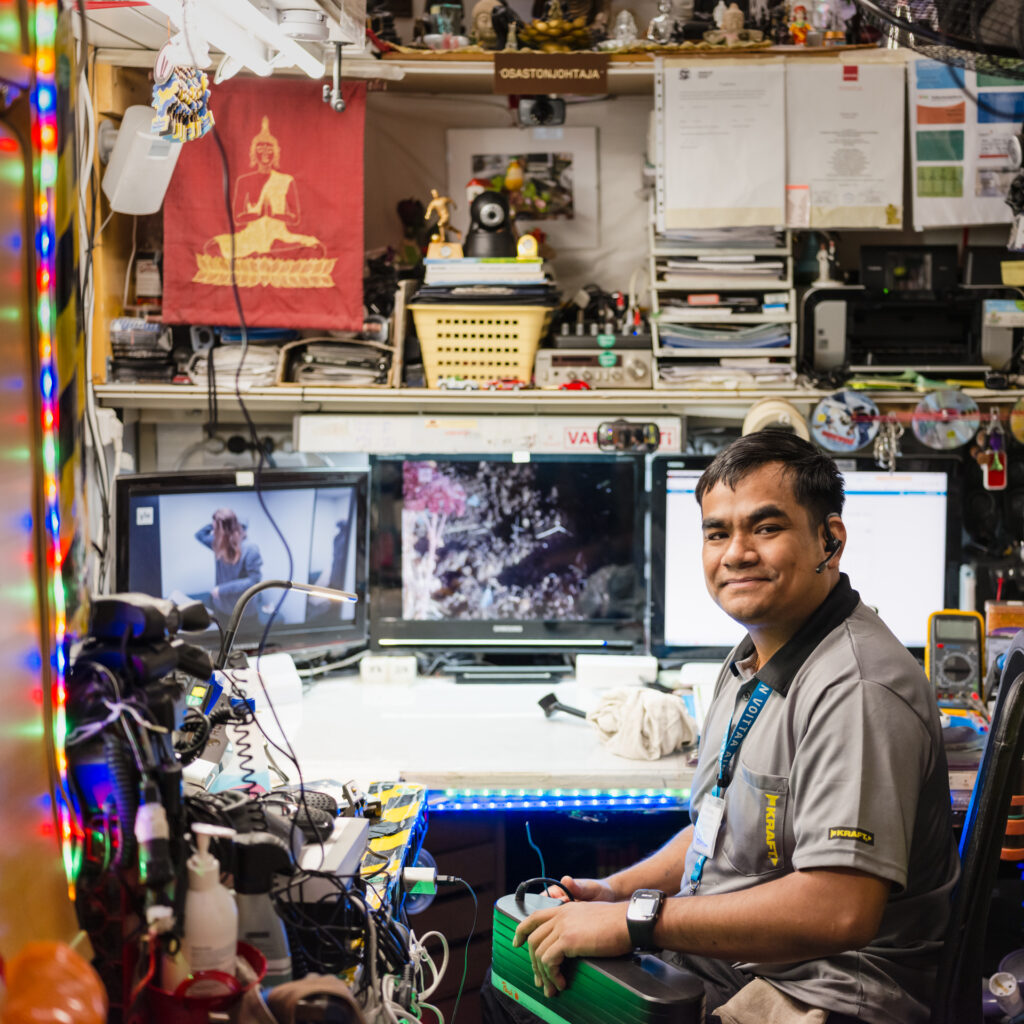book and zine campaign
As part of this project around 260 copies of unbroken.solutions photobook will be sent to councils and local authorities in the UK. The ask is a simple one – do more to support repair and reuse in your community.

As part of the campaign, zines have also been produced to distribute to the public, via the community repair network and local repair groups, to encourage the public to engage their councils to ask for more support.
Deciding to run a photobook and zine based campaign clearly comes with an environmental impact. But throughout the process we have been thoughtful and aimed to minimise waste and resources.
The book was designed with Struktur Design to minimise waste and simplify production. The books are A4 size (to minimise paper waste) and use a mix of sustainably sourced and recycled materials. The ‘cloth’ cover uses Wibalin textured and recycled paper. The papers are all CarbonNeutral and FSC sourced. It was printed digitally, as the run size meant offset lith printing would create too much waste (it might all be recycled but it still creates waste and uses energy).
The printers, Pureprint, were selected from criteria to assess their eco-credentials as well as price. They have had ISO14001 (Environmental Management) and EMAS since the 1990s, were the world’s first CarbonNeutral printer. Working with Richard at Pureprint, we aimed to minimise impact in materials, production and use of local suppliers and finishers.
The act now zines were offset printed at YouLovePrint, also part of the PurePrint Group and working to the same environmental management standards.
The books and zines are all sent out using sustainable packaging materials from Priory Direct, BCorp and CarbonNeutral company, offering packaging made from recycled (and recyclable) materials that are sustainably sourced. No bubblewrap, no plastic.
To ship the books and zines, they were hand walked to my local Post Office. Later this year many of the zines will be distributed by and to community repair groups at the upcoming FixFest 2023, again minimising the shipping footprint.

It’s not perfect, but with a little effort you can reduce the impact of your activities. If you want more information on sustainable photobook publishing, check out the resources at SPPNetwork.
We already have solutions. Act Now.


